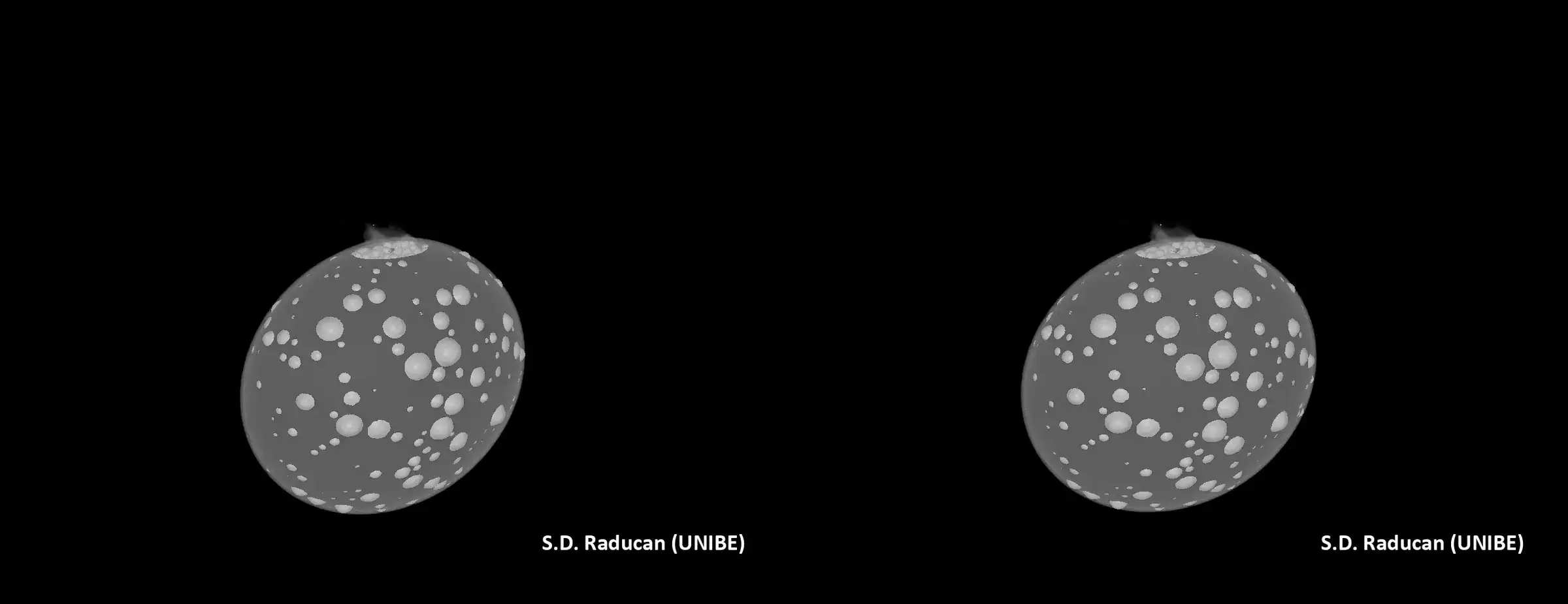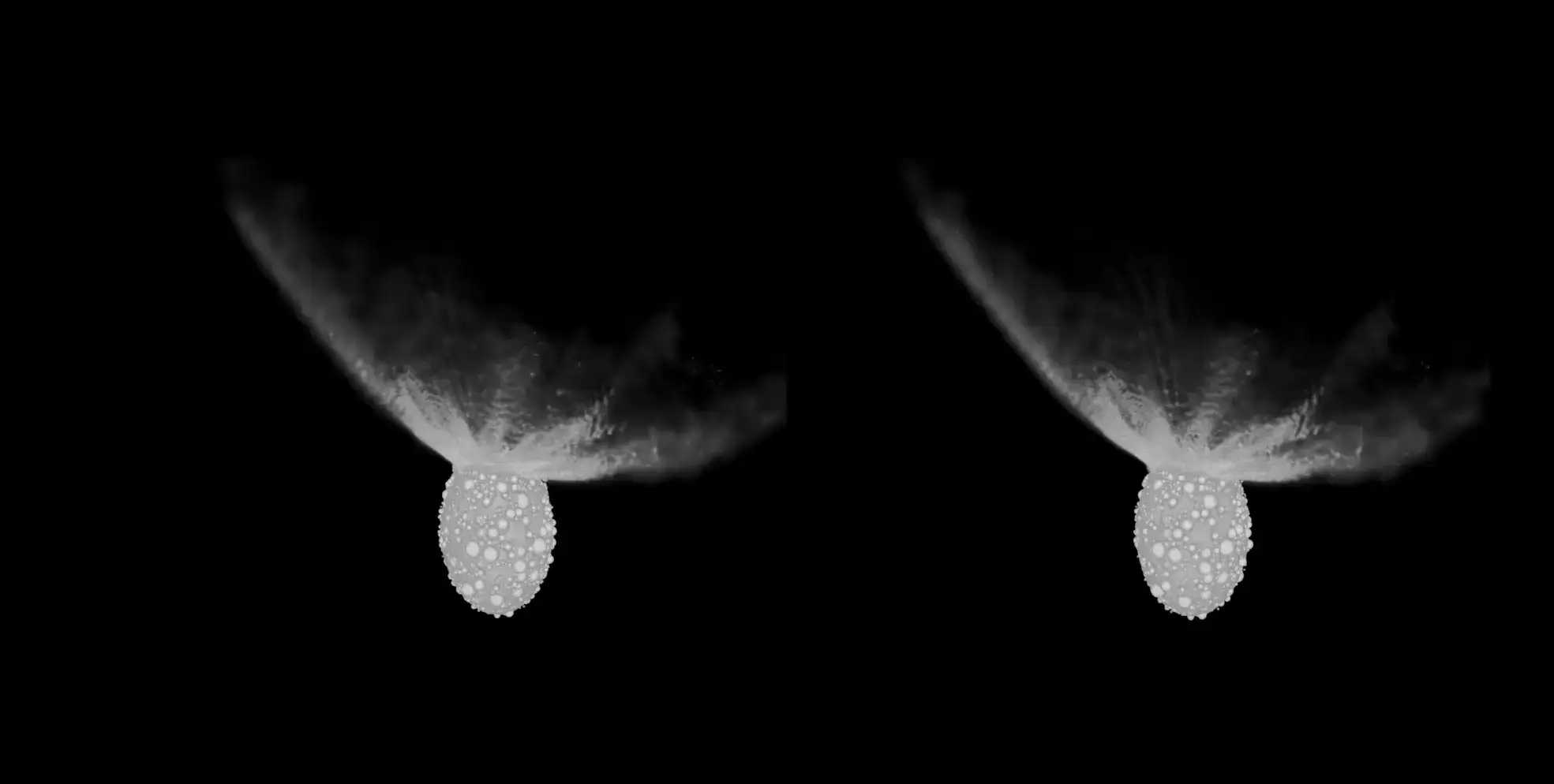Asteroid Hit by NASA Spacecraft Was Reshaped by the Collision, Study Finds
Instead of forming a crater, the agency’s intentional DART crash redistributed massive amounts of the asteroid and shot large quantities of rock into space
:focal(2667x1498:2668x1499)/https://tf-cmsv2-smithsonianmag-media.s3.amazonaws.com/filer_public/1a/36/1a3686d2-3858-40c9-8a7c-ac5b2436f5e8/pia25329orig.jpg)
In September 2022, NASA’s Double Asteroid Redirection Test (DART) spacecraft intentionally rammed into an asteroid millions of miles from Earth, altering the rock’s orbital trajectory. The mission demonstrated that a spacecraft could possibly be used in the future to change the path of an asteroid heading toward our planet.
In a new study published Monday in the journal Nature Astronomy, researchers examined this collision more closely. They found that rather than being a solid object, the asteroid, called Dimorphos, is more like a pile of rubble, weakly held together by gravity. And instead of just forming an impact crater, DART’s crash actually reshaped the asteroid.
The collision ejected about 1 percent of Dimorphos’ mass into space, the team reports. It also shook free around 8 percent of the asteroid’s mass from one end and redistributed it in the center, making Dimorphos rounder, writes Inverse’s Kiona Smith.
“If you think of Dimorphos as starting out as resembling a chocolate M&M, now it would look like it has had a bite taken out of it,” Sabina Raducan, lead author of the study at a planetary scientist at the University of Bern in Switzerland, says in a statement from the European Space Agency (ESA).
The reshaping of Dimorphos is “completely outside of the realm of physics as we understand it” in our everyday lives on Earth, Cristina Thomas, who is the leader of the DART Observations Working Group and did not contribute to the recent findings, tells the New York Times’ Robin George Andrews. “This has overarching implications for planetary defense.”

DART launched to space on November 24, 2021, and spent the next ten months traveling to Dimorphos. The asteroid, about 525 feet across, orbits a larger asteroid, called Didymos, that’s about half a mile across.
The pair of asteroids orbits the sun and doesn’t pose any threat to our planet. At the time of impact, Dimorphos was 6.8 million miles from Earth. But scientists wanted to test whether they could purposely redirect an asteroid in the event of a planetary defense emergency.
DART successfully crashed into Dimorphos on September 26, 2022, while traveling at 14,000 miles per hour. Since then, scientists have been studying how the impact affected the asteroid.
“What we saw after the impact was a lot of material being ejected,” Raducan tells Sky & Telescope’s Jeff Hecht. “Some formed a tail, like one from a comet.”
For months after the collision, that trail of debris stretched more than 6,000 miles into space. And a cloud of rocks shaken free by the crash formed a “boulder swarm” around the asteroid.
“Before DART’s arrival at Dimorphos, we didn’t know what to expect. Because the system is so far away from Earth, Dimorphos was not properly resolved. Therefore, we could have encountered anything from a monolithic body—essentially a large boulder the size of Dimorphos—to a cohesionless rubble pile or anything in between,” Raducan tells Space.com’s Robert Lea. “So, while the impact outcome came as a surprise to most, it was one of the predicted scenarios.”
Still, the finding that Dimorphos is a rubble pile, after all, adds support to the idea that the asteroid was formed by material flung out from Didymos long ago, per the ESA.

To reach its conclusions, the team simulated the DART crash and compared the results against what had been observed after the mission. In all, they ran roughly 250 simulations of the two hours post-crash, with each simulation taking about a week and a half, Raducan says in the statement.
“We incorporated all the values we did know—such as the mass of the DART spacecraft, the approximate shape of the asteroid, the orbital deflection and the size of the impact plume—while varying the factors we don’t know,” she says in the statement. “We also made some reasonable assumptions based on the physical properties of meteorites resembling Dimorphos.”
After the 2022 impact, researchers determined the DART mission had successfully changed Dimorphos’ orbit around Didymos, shortening it from 11 hours and 55 minutes to 11 hours and 22 minutes. Last year, high school students contributed to research that found the asteroid’s orbit may have decreased by another minute.
Scientists will be able to get another close look at Dimorphos in a couple of years. The ESA’s Hera spacecraft is set to launch in October and arrive at the asteroid at the end of 2026.
/https://tf-cmsv2-smithsonianmag-media.s3.amazonaws.com/accounts/headshot/Will-Sullivan-photo.png)
/https://tf-cmsv2-smithsonianmag-media.s3.amazonaws.com/accounts/headshot/Will-Sullivan-photo.png)